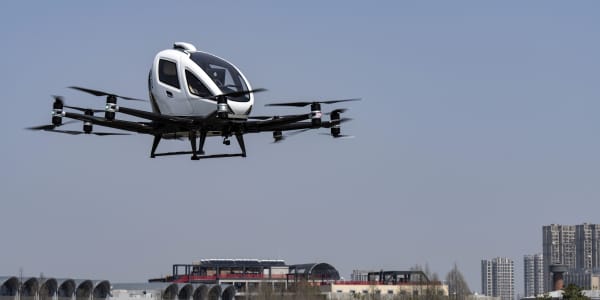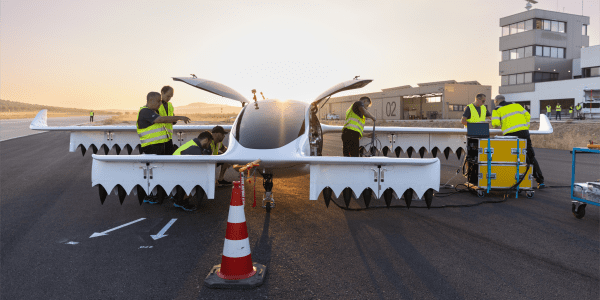[The live stream has ended. A replay of the mission is available above.]
SpaceX launched its 14th mission of the year on Wednesday morning from California, putting the seventh batch of Iridium NEXT satellites into orbit using a Falcon 9 rocket.
The rocket liftoff from Vandenberg Air Force Base through heavy fog at 7:39 a.m. ET. The first stage of the Falcon 9 – also known as the booster – came back down to Earth a few minutes after launch, landing on SpaceX's autonomous barge it has positioned in the Pacific Ocean. High winds created "challenging weather conditions" in the open ocean, the company said, but the booster was still successfully recovered.
About an hour after launch, the rocket deployed the 10 satellites into orbit around the Earth, completing the mission. The Iridium NEXT satellites on board Wednesday's launch represent the second-to-last launch toward completing Iridium's $3 billion network of satellites.
SpaceX also attempted to catch the rocket's fairing – the bulbous nose cone on top of the rocket — after the launch using a high speed boat known as "Mr. Steven." SpaceX said Mr. Steven was "not able to catch" the fairing but the crew of the boat "did see the fairing coming down."
"We will continue to attempt [fairing recoveries] in the future," SpaceX said.
Mr. Steven has a net strung up behind it to capture the fairing. After three close misses earlier this year, SpaceX upgraded the net, expanding its area to four times the size of previous attempts. The fairing returns to Earth at about eight times the speed of sound after the launch, so SpaceX has the fairing rigged with its own propulsion and guidance systems, as well as large parachutes, to slow it down. Fairings represent about 10 percent of the cost of a rocket, the company has said, with each Falcon 9 launch coming with a price tag starting at $62 million.
This was also the third launch for SpaceX's new variation of its Falcon 9 rocket called "Block 5." After evolving Falcon 9 over nearly a decade, with upgrades between every launch, SpaceX anticipates this will be the final version of a workhorse rocket that already completed more launches in 2017 than any other commercial vehicle.
Block 5 arrives just as SpaceX is on pace to shatter its record 18 successful launches completed last year. With three more missions completed at this point than the same time in 2017 — including the debut of Falcon Heavy, the most powerful rocket in the world — SpaceX is aiming for about 30 launches this year, according to SpaceX President and COO Gwynne Shotwell.






